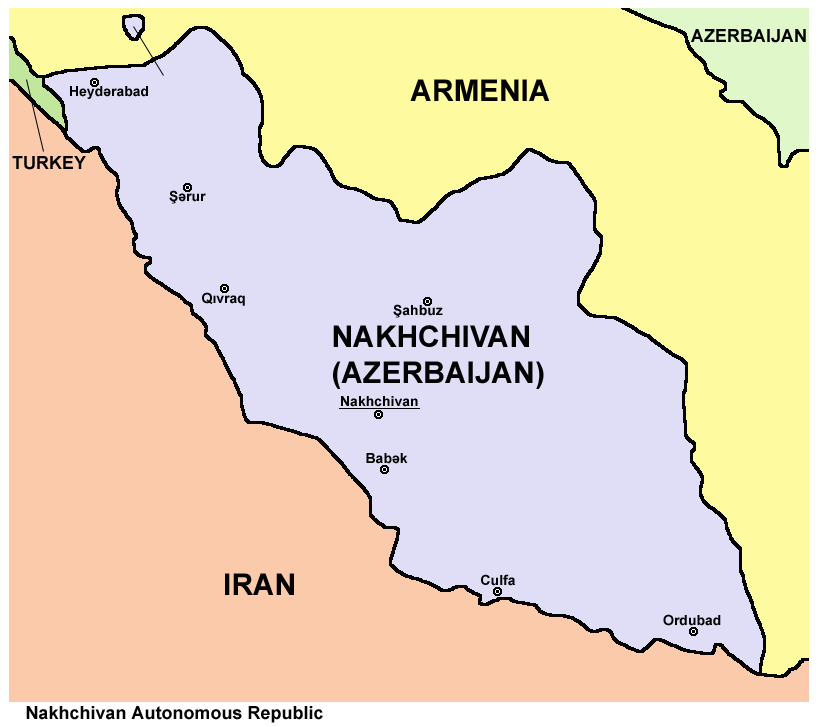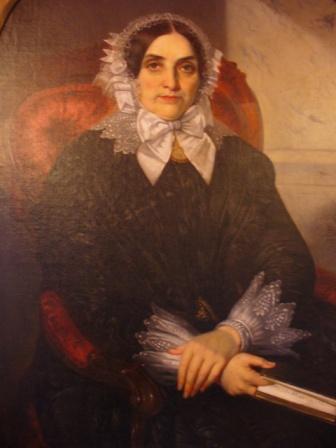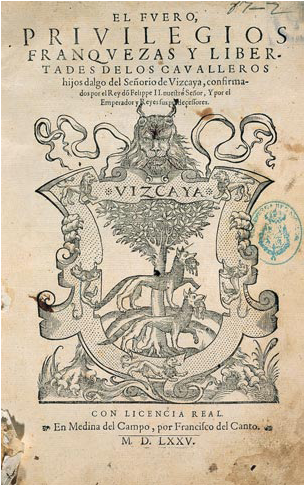|
Treviño Enclave
The Treviño Enclave ( ) in northern Spain is part of the territory of the province of Burgos (part of Castile and León), but is completely surrounded by the territory of the Basque Country province of Álava. Thus, it is an enclave of the Basque Country and an exclave of Castile and León.Visitando La Puebla de Arganzón ''El Correo'' (Bilbao), 2009-12-14. Accessed online 2010-01-01. It consists of two — Condado de Treviño and [...More Info...] [...Related Items...] OR: [Wikipedia] [Google] [Baidu] |
Enclave
An enclave is a territory that is entirely surrounded by the territory of only one other state or entity. An enclave can be an independent territory or part of a larger one. Enclaves may also exist within territorial waters. ''Enclave'' is sometimes used improperly to denote a territory that is only partly surrounded by another state. Enclaves that are not part of a larger territory are not exclaves, for example Lesotho (enclaved by South Africa), and San Marino and Vatican City (both enclaved by Italy) are enclaved sovereign states. An exclave is a portion of a state or district geographically separated from the main part, by some surrounding alien territory. Many exclaves are also enclaves, but an exclave surrounded by the territory of more than one state is not an enclave. The Azerbaijani exclave of Nakhchivan is an example of an exclave that is not an enclave, as it borders Armenia, Iran, and Turkey. Semi-enclaves and semi-exclaves are areas that, except for possessing ... [...More Info...] [...Related Items...] OR: [Wikipedia] [Google] [Baidu] |
Province Of Burgos
The province of Burgos is a Provinces of Spain, province of northern Spain, in the northeastern part of the Autonomous communities of Spain, autonomous community of Castile-Leon, Castile and León. It is bordered by the provinces of Palencia (province), Palencia, Cantabria, Biscay, Vizcaya, Álava, La Rioja (autonomous community), La Rioja, Soria (province), Soria, Segovia (province), Segovia, and Valladolid (province), Valladolid. Burgos is the province of Spain that has borders with most provinces. Its capital is the city of Burgos. The Cartularies of Valpuesta from the monastery Santa María de Valpuesta, in Burgos, are considered to be the oldest known documents containing words written in the Spanish language. Overview Since 1964, archaeologists have been working at numerous areas of the Atapuerca Mountains, Archaeological Site of Atapuerca, where they have found ancient hominid and human remains, the former dating to more than one million years ago, with Artifact (archaeo ... [...More Info...] [...Related Items...] OR: [Wikipedia] [Google] [Baidu] |
Seigneury
A seigneur () or lord is an originally feudal system, feudal title in Ancien Régime, France before the French Revolution, Revolution, in New France and British North America until 1854, and in the Channel Islands to this day. The seigneur owned a seigneurie, seigneury, or lordship—a form of title or land tenure—as a fief, with its associated obligations and rights over person and property. In this sense, a seigneur could be an individualmale or female, high or low-bornor a collective entity, typically a religious community such as a monastery, seminary, college, or parish. In the wake of the French Revolution, seigneurialism was repealed in France on 4 August 1789 and in the Province of Canada on 18 December 1854. Since then, the feudal title has only been applicable in the Channel Islands and for sovereign princes by their families. Terms The English seigneur is borrowed from the French , which descends from Middle French , from Old French (oblique form of ''sire''), f ... [...More Info...] [...Related Items...] OR: [Wikipedia] [Google] [Baidu] |
Kingdom Of Castile
The Kingdom of Castile (; : ) was a polity in the Iberian Peninsula during the Middle Ages. It traces its origins to the 9th-century County of Castile (, ), as an eastern frontier lordship of the Kingdom of León. During the 10th century, the Castilian counts increased their autonomy, but it was not until 1065 that it was separated from the Kingdom of León and became a kingdom in its own right. Between 1072 and 1157, it was again united with León, and after 1230, the union became permanent. Throughout that period, the Castilian kings made extensive conquests in southern Iberia at the expense of the Islamic principalities. The Kingdoms of Castile and of León, with their southern acquisitions, came to be known collectively as the Crown of Castile, a term that also came to encompass overseas expansion. History 9th to 11th centuries: beginnings According to the chronicles of Alfonso III of Asturias, the first reference to the name "Castile" (Castilla) can be found in a documen ... [...More Info...] [...Related Items...] OR: [Wikipedia] [Google] [Baidu] |
Alfonso VIII Of Castile
Alfonso VIII (11 November 11555 October 1214), called the Noble (El Noble) or the one of Las Navas (el de las Navas), was King of Castile from 1158 to his death and King of Toledo. After having suffered a great defeat with his own army at Alarcos against the Almohads in 1195, he led the coalition of Christian princes and foreign crusaders who broke the power of the Almohads in the Battle of Las Navas de Tolosa in 1212, an event which marked the arrival of a tide of Christian supremacy on the Iberian Peninsula. His reign saw the domination of Castile over León and, by his alliance with Aragon, he drew those two spheres of Christian Iberia into close connection. Regency and civil war Alfonso was born to Sancho III of Castile and Blanche, in Soria on 11 November 1155. He was named after his grandfather Alfonso VII of León and Castile, who divided his kingdoms between his sons. This division set the stage for conflict in the family until the kingdoms were re-united by Alf ... [...More Info...] [...Related Items...] OR: [Wikipedia] [Google] [Baidu] |
Sancho VI Of Navarre
Sancho Garcés VI (; 21 April 1132 – 27 June 1194), called the Wise (, ) was King of Navarre from 1150 until his death in 1194. He was the first monarch to officially drop the title of ''King of Pamplona'' in favour of King of Navarre, thus changing the designation of his kingdom. Sancho Garcés was responsible for bringing his kingdom into the political orbit of Europe. He was the eldest son of García Ramírez, ''the Restorer'' and Margaret of L'Aigle. Biography Sancho VI inherited a debilitated kingdom, subject of frequent raids by the Kingdom of Castile of Alfonso VII and by the County of Barcelona of Ramon Berenguer IV, also king of Aragon, who in 1140 had agreed the partition of the kingdom in the Treaty of Carrión. He tried to repair the borders of his kingdom, which had been reduced by the Treaties of Tudején and Carrión, which he had been forced to sign with Castile and Aragón in his early reign. By the Accord of Soria, Castile was eventually confirmed in ... [...More Info...] [...Related Items...] OR: [Wikipedia] [Google] [Baidu] |
Fuero
(), (), (), () or () is a Spanish legal term and concept. The word comes from Latin , an open space used as a market, tribunal and meeting place. The same Latin root is the origin of the French terms and , and the Portuguese terms and ; all of these words have related, but somewhat different meanings. The Spanish term has a wide range of meanings, depending upon its context. It has meant a compilation of laws, especially a local or regional one; a set of laws specific to an identified class or estate (for example , comparable to a military code of justice, or , specific to the Roman Catholic Church). In many of these senses, its equivalent in medieval England would be the custumal. In the 20th century, Francisco Franco's regime used the term for several of the fundamental laws. The term implied these were not constitutions subject to debate and change by a sovereign people, but orders from the only legitimate source of authority, as in feudal times. Characteri ... [...More Info...] [...Related Items...] OR: [Wikipedia] [Google] [Baidu] |
Population Density
Population density (in agriculture: Standing stock (other), standing stock or plant density) is a measurement of population per unit land area. It is mostly applied to humans, but sometimes to other living organisms too. It is a key geographical term.Matt RosenberPopulation Density Geography.about.com. March 2, 2011. Retrieved on December 10, 2011. Biological population densities Population density is population divided by total land area, sometimes including seas and oceans, as appropriate. Low densities may cause an extinction vortex and further reduce fertility. This is called the Allee effect after the scientist who identified it. Examples of the causes of reduced fertility in low population densities are: * Increased problems with locating sexual mates * Increased inbreeding Human densities Population density is the number of people per unit of area, usually transcribed as "per square kilometre" or square mile, and which may include or exclude, for example, ar ... [...More Info...] [...Related Items...] OR: [Wikipedia] [Google] [Baidu] |
Miranda De Ebro
Miranda de Ebro () is a Spanish municipality belonging to the province of Burgos in the autonomous community of Castile and León. Straddling the Ebro river, near its confluence with the Bayas, the city is located on the northern watershed of the Obarenes Mountains, near the border with the Basque province of Álava and the autonomous community of La Rioja. As of 2 January 2025, the municipality has a registered population of 37,138. The city has an industrial economy focusing on the chemical industry. Connected to the Meseta Central through the , Miranda is an important transportation hub, served by the AP-1 and AP-68 road routes and the Madrid–Hendaye and Tudela–Bilbao rail routes. Within are the cities of Bilbao, Burgos, Logroño and Vitoria-Gasteiz. Geography The city of Miranda de Ebro is located in the northeastern part of the province of Burgos, from the capital, in the autonomous community of Castile and León (Spain). The coordinates of the city are: latitu ... [...More Info...] [...Related Items...] OR: [Wikipedia] [Google] [Baidu] |
Judicial Districts Of Spain
In Spain, a judicial district () is a territorial unit for the administration of justice, composed of one or more municipalities bordering and within the same province. One of the municipalities that make up the judicial district, usually the largest or the one that deals with the highest number of legal matters, is the seat of one or more courts of first instance and instruction. The remaining municipalities of the district have magistrates' courts. In addition to their primary function, judicial districts are also the constituencies for the election of provincial councils. History The first division that was done in Spain on legal grounds would be during the Roman Empire. The provinces are divided into conventus where the inhabitants of the district regularly met in the header to resolve legal issues. The people could go to either conventus according to their convenience and the distance that separated them, that is why the boundaries were unclear. The first modern divisi ... [...More Info...] [...Related Items...] OR: [Wikipedia] [Google] [Baidu] |
La Puebla De Arganzón
La Puebla de Arganzón (also written Lapuebla de Arganzón) is a municipality located in the province of Burgos, Castile and León, Spain. It is in the Comarca del Ebro and the Judicial district Miranda de Ebro. According to the INE, the municipality had a population of 529 inhabitants in 2009. INE, 2009. Query at http://www.ine.es/. Accessed online 2010-01-01. La Puebla de Arganzón and the adjacent municipality of Condado de Treviño together constitute the enclave of Treviño, part of the territory of Burgos, surrounded by the Basque province of Álava.Visitando La Puebla de Arganzón , ''El Correo'' (Bilbao), 2009-12-14. Accessed online 2010-01-01. La Puebla de Arganzón has a surface area of with a population of 529 and a populatio ... [...More Info...] [...Related Items...] OR: [Wikipedia] [Google] [Baidu] |
Condado De Treviño
Condado de Treviño ("County of Treviño") is a municipality in the province of Burgos, autonomous community of Castile and León, Spain. This municipality and the geographically smaller La Puebla de Arganzón make up the enclave of Treviño. Although the enclave is part of Burgos (and, hence, part of the autonomous community of Castile and León) it is surrounded by the province of Álava, part of the autonomous community of the Basque Country. The seat of the municipality is Treviño. As of 2015, the municipality had a population of 1,362. History An abundance of prehistoric remains testify that the Condado de Treviño has been inhabited since ancient times. In pre-Roman times, the Varduls, Caristios and Autrigones all lived here at one time or another, attesting to the region's strategic importance. In the hamlet of Laño one can still see artificial caves that were inhabited by hermits more than 1500 years ago. The Las Gobas caves preserve inscriptions and drawings ... [...More Info...] [...Related Items...] OR: [Wikipedia] [Google] [Baidu] |






